This week, Zsófi is talking Eastern European food. What qualifies as Eastern European, and what makes Eastern European food stand out from the rest? Read to the end for a run down of the most popular Eastern European foods.
—
What Exactly Counts as Eastern European?
As a kid I was always taught that Hungary is strictly in Central Europe. More precisely, it is located in the eastern part of Central Europe. Gosh, I can still hear the stern voice of my teachers: “Kids, repeat after me! Hungary is in Eastern Central Europe. Not Central Eastern Europe. God forbid anybody assumes even just for a moment that we are in any way associated with Eastern Europe.”
Such subtle semantic minefields were hard to navigate as a 12-year-old in geography class sweating from her whole body afraid of making the teachers angry. And as it happens to turn out, now that I am an adult and actually capable of not only reading a map but understanding the subtleties of global geopolitics, I live completely outside of it. In the UK, where I currently spend my days pondering on cardinal directions, this problem was rapidly dismissed by declaring every country in the former Eastern Bloc as Eastern Europe.
To people here, I am the very epitome of this Eastern Europe, the one that grew up in a city full of Soviet panel blocks, the one that ate gulyás every Sunday, the one that speaks an unforgettable language.
While residues of the 12 years I spent in the Hungarian public education system cannot be erased so easily, I am starting to embrace my Eastern European status here, despite being able to look at a map and recognise the middle. Whether we call it Eastern Europe or Central Europe, Hungary is still in the same place. My spa waters feel just as healing in the east or the centre. My summers are just as relentlessly hot. My paprika just as spicy. My tea just as fruity. And my childhood just as Hungarian.
However, while I do not especially care for these labels in my private life – much like a dog without a name, I’ll listen to any – writing this article, I am starting to understand the need for a word that encompasses the exact territory that I want to cover. I have decided on Eastern Europe for many reasons. First and foremost, the idea of making my former history teacher fume with anger makes me inexplicably giddy. But secondly and perhaps more rationally, while geographically Hungary might be in the middle, culturally it fits into the group of countries all around it that are in the central and eastern parts of Europe.
So for the sake of clarity, when I mention Eastern Europe in this article, I am referring to the variety of cultures and peoples within the geographical borders of Hungary, Czechia (formerly the Czech Republic), Poland, Slovenia, Slovakia, Serbia, Kosovo, Bulgaria, Romania, Moldova, Ukraine, Belarus, Lithuania, Latvia, and Estonia.
Read more from Zsófi’s Kitchen: My Authentic Hungarian Recipes, Straight from Budapest
The Very Best of Eastern European Food
Now, writing about one country’s food culture is hard enough: different regions will have varying traditions, ingredients, perhaps even climates. (Over)General statements may be unavoidable, and caveats are an absolute must. So is respecting borders. Unfortunately, language, culture, food, history – they don’t mind generalising and have no specific opinion of caveats, but gosh, they have a hard time respecting borders. They don’t adhere to maps, laws, or fences. Music, dances, fashion, traditions, and cooking habits travelled freely long before the European Union gave this right to its people. So yes, Eastern European countries’ cultures will have many similarities. They all have castle ruins in their cities let over from past monarchies. Or former palace grounds turned into botanical gardens. They all celebrate Women\’s Day with such fervour that would make every florist and chocolatier go green with envy in Western Europe. They bring out the celebratory cake and cards and presents not once but twice a year, on birthdays and on everybody’s nameday. And damn us if we don’t have the most fabulous fold dresses with beautiful handcrafted floral patterns.
This is not to say Eastern European cultures are identical. Far from it, in fact. However, in this article I want to focus on what it is that unites us (unexpectedly mainly from a food perspective). The abundant, hearty, filling, meaty, soupy and stewy food that keeps you warm in the winter, nourishes you during tough times, and leaves you sweaty in the 35 degrees summers.
Below, I have collected some dishes from the Eastern European region, all most probably contested, and attributing each to just one country will probably get me cancelled in the other. However, if there is only one thing we have to agree on is that all our food is incredibly fabulous and worth getting in front of bigger audiences.
Read more from Zsófi’s Kitchen: How to Be Vegetarian in Hungary
A Run Down of the Most Popular Eastern European Food
Borscht
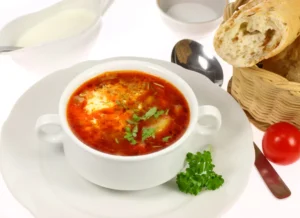
Perhaps one of the most well-known Eastern European exports is this sour beetroot soup, originating (most likely) from the country of Ukraine. Like much of the Eastern European cuisine, Borscht also started out as a staple peasant food that prioritises filling you up over giving you a luxurious culinary experience.
It started as a simple soup which could be prepared by boiling the stalks or leaves of any plant around you. As its popularity grew, new ingredients were added to the simple broth. Green borscht was made by the addition of sorrel while white borscht featured barley and rye flour.
Borscht reached the height of its fame during the Soviet times, where it became almost an essential part of Eastern European identity. Nowadays, in many households, borscht isn’t borscht without the beetroot that lends it its striking magenta colour. A traditional Ukrainian borscht could now be prepared using the ingredients of beetroot, cabbage, potatoes, carrots, dill, and bay leaves, salt, and pepper to season. Of course, in more traditional recipes, meat also features, usually pork with fat, but vegetarian versions have been a part of the Borscht culture almost just as long.
Stuffed Cabbage Rolls
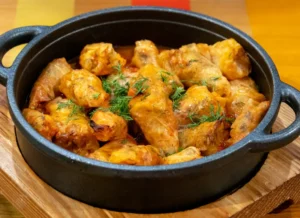
While researching stuffed cabbage rolls for this article, in the matter of one minute, I came across five different versions of this dish. I found Töltött Káposzta (Hungarian), Balandeliai (Lithuanian), Sarmale (Romanian), Holubky (Czech), and Sarma (Serbian). And I am sure if I hadn’t found myself immediately overwhelmed by the various shapes stuffed cabbages come in, I would have more and more examples until it covered every inch of the Eastern European region.
No matter where it’s from and what country’s name it bears, this dish will always consist of a base of ground meat and rice filling wrapped in cabbage leaves and cooked over sauerkraut or tomato sauce (or both as I have decided is superior). It is often made in huge batches, ones not fathomable even by the stomach, and after one meal where it is consumed fresh, it is frozen or given away to relatives. Somehow, and I know many share this opinion, stuffed cabbage rolls taste best the next day/next few days.
This is a dish you would also often see at the dinner table on New Year’s Day or maybe even Christmas. Vegetarians may also enjoy it once they switch out the ground meat to other savoury fillings like soy mince or, as grandpa likes to make it for me, diced mushrooms.
Filled Dumplings or Pierogi
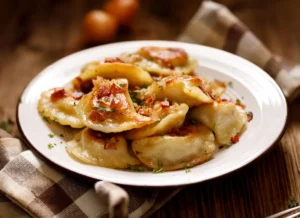
The ultimate Polish comfort food, pierogi are beautifully light dumplings which are filled with various fillings such as sauerkraut, mushroom, cottage cheese, potatoes, cabbage, or different meats. Putting a twist on the original Chinese dumpling recipe, the Polish have been cooking pierogi since the 13th century. Preparing the dish is fairly easy, for the dough, you need flour, water, oil, and salt. Once mixed, you cut the dough into circles and place the filling of your choice in the middle. It is soft and light if boiled and crispy and crusty if pan fried in oil.
Pierogi has taken the world by storm in recent years. Following the lead from Poland’s annual pierogi festival, Polish and Ukrainian immigrant communities have started many interesting and strange pierogi-based traditions. There are pierogi festivals in Georgia and Indiana, and even a Great Pierogi Race in Pittsburgh organised by the Pirates baseball team. The North-American region also bore witness to the birth of many khm…unusual flavours such as cheddar cheese or jalapeno. As much as I am a jalapeno fan, my recommendations would definitely be a lovely medley of savoury fillings, like sauerkraut and mushrooms or a cottage cheese and potato flavour.
Pickled Vegetables
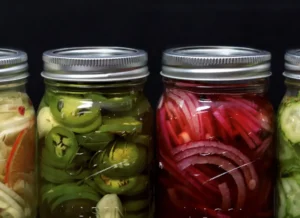
I know this one seems really out of place following the indulgent meals I have listed so far. But there is no other food as worthy as pickles – as strange as it may sound – to feature an article about Eastern European food. There are a variety of vegetables that fall victim to the pickling process, cauliflower, carrots, beets, cabbage, and gherkin. For some of these, Eastern Europeans also use the classic vinegar to aid the pickling process, but for gherkins, the steps and ingredients are a little bit different.
You take a huge glass jar that you fill with gherkins, dill, garlic, and perhaps some spices such as mustard seeds, although this last is not a must. What really is essential, however, is covering the gherkins and seasonings with sourdough bread soaked in some salty water. This may seem strange but the yeast of the bread helps the fermentation process and gives these pickles their signature taste. After you’ve assembled your pickly goody jar, close it shut, and put it out in the sun in your garden until it looks completely fermented and ready.
Pickled cabbage, or sauerkraut, is another absolute favourite. The tradition of fermenting white cabbage in a vinegar, salt, and caraway seeds mixture is popular across the globe, the name itself being of a German origin. In many regions, it is almost a second side dish, consumed in pairs with your main dish. This is also very common in Eastern Europe, alongside using sauerkraut as an ingredient in traditional recipes (see pierogi and Stuffed Cabbage Rolls above as an example).
Chocolate Salami
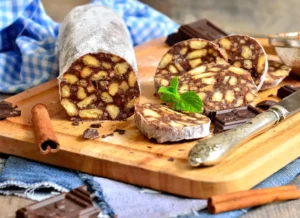
We’ve arrived at the only dessert of the article, and it’s a good one. Chocolate salami is a rich chocolatey dessert that doesn’t even require any baking. All you need to do is mix cocoa powder, sugar, rum, and crumbled cookies, shape it into a log or salami shape, and refrigerate until completely firm and easy to slice with a knife. It is quite popular mainly due to its ease and complete deliciousness. I associate the Chocolate Salami with Christmas time but many families will eat it whenever they fancy and I believe that is a better strategy that we should all adopt.

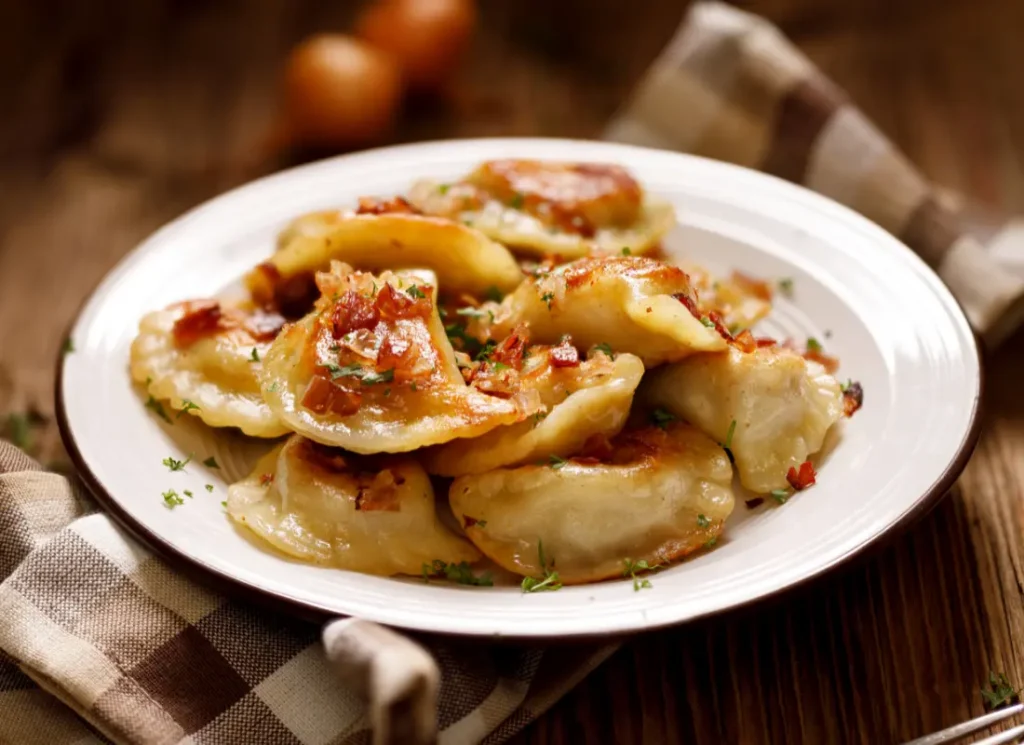
Reading this reminded me that I must try some more Eastern European food! I’ve had a variety of various dishes over the years but there are so many more I really want to taste. Fantastic!
Aw, I’m so glad you enjoyed it! If I may recommend a dish, I genuinely do not think anyone should spend their life without having tried stuffed cabbage rolls at least once. They are quite perfect and if served with a dollop of sour cream and some salt to season, they will be unforgettable. Let me know how you like it!